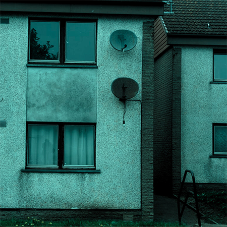Before deciding which insulation material you feel is right for you, there are various things you need to consider. What is the R-value, price, sound insulation properties and environmental impact? Here is a list of the 5 most commonly used insulation materials and what they can do for you.
Mineral Wool
Mineral wool covers quite a few types of insulation. It could refer to either glass wool which is fibreglass manufactured from recycled glass or rock wool which is a type of insulation made from basalt. Mineral wool can be purchased in batts or as a loose material. Most mineral wool does not have additives to make it fire resistant, making it poor for use in situation where extreme heat is present. Mineral wool has an R-value ranging from R-2.8 to R-3.5.
Fibreglass
Fibreglass is an extremely popular insulation material. One of its key advantages is value. Fibreglass insulation has a lower installed price than many other types of insulating materials and, for equivalent R-Value performance (i.e., thermal resistance), it is generally the most cost-effective option when compared to cellulose or sprayed foam insulation systems. Because of how it is made, by effectively weaving fine strands of glass into an insulation material, fibreglass is able to minimise heat transfer. It is essential when installing fibreglass that the necessary safety equipment is worn, as glass powder and tiny shards of glass are formed, which could potentially cause damage to the eyes, lungs, and skin. Fibreglass is an excellent non-flammable insulation material, with R-values ranging from R-2.9 to R-3.8 per inch
Polystyrene
Polystyrene is a waterproof thermoplastic foam which is an excellent sound and temperature insulation material. It comes in two types, expanded (EPS) and extruded (XEPS) also known as Styrofoam. The more costly XEPS has an R-value of R-5.5 while EPS is R-4. Polystyrene insulation has a uniquely smooth surface which no other type of insulation possesses. It is used in both residential and commercial settings. Polystyrene insulation is very rigid, unlike its fluffier cousins. Typically the foam is created or cut into blocks, ideal for wall insulation.
Cellulose
Cellulose is a very eco-friendly form of insulation. It is composed of 75-85% recycled paper fibre, usually post-consumer waste newsprint. The other 15% is a fire retardant such as boric acid or ammonium sulphate. Because of the compactness of the material, cellulose contains next to no oxygen within it. Without oxygen within the material, this helps to minimise the amount of damage that a fire can cause. So not only is cellulose perhaps one of the most eco-friendly forms of insulation, but it is also one of the most fire resistant forms of insulation. Cellulose has an R-value between R-3.1 and R-3.7.
Polyurethane Foam
Spray polyurethane foam (SPF) is made by mixing and reacting chemicals to create a foam. The mixing and reacting materials react very quickly, expanding on contact to create foam that insulates, air seals and provides a moisture barrier. They are relatively light, weighing approximately two pounds per cubic foot, and have an R-value of approximately R-6.3 per inch of thickness.
For more on Thermal Insulation check out our product hub
Related Blog Articles



crop192.png)












